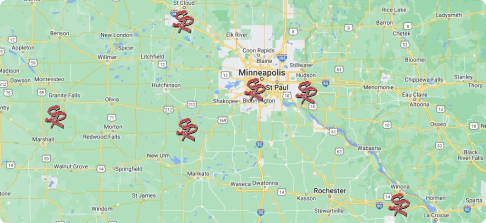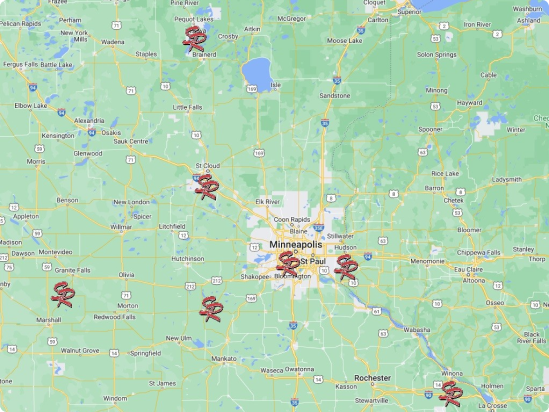With spring quickly approaching, it’s time to begin thinking about one of the most often forgotten parts of your home’s exterior: your gutters. As an exterior company, we understand that gutters are not the most fun and exciting home renovation, especially when compared to the more colorful siding and roofing options. But your gutters are very important to the health of your home, especially in the spring. Heavy rain and melting snow can do a number on your siding and foundation if it is not properly redirected away from your home.
Now is the best time of year to get outside and look for signs that your gutters need to be replaced. If you think it’s time, here are a few options that you have when it comes to new gutter installation.
Gutter Styles
There are two major styles of gutters: K-style and half-round. Most homes you see will likely have K-style gutters, which have flat bottoms and backs. The most notable feature of K-style gutters is the curve at the front, which is designed to look similar to crown molding. These are most commonly used because their capacity is greater when compared to half-round gutters with the same width.
Half-round gutters are mostly seen on older styles of homes. They get their name from their literal shape, which is a simple curve. If you look at a cross-section of half-round gutters, they will look like a half-circle. Half-round gutters are still commonly used on Colonial and Victorian houses to maintain their old-time charm. Although they don’t have the capacity of K-style gutters, they are still effective at directing water away from your home.
Of the two styles, the K style tends to cost a bit more per foot.
Downspout Styles
When it comes to downspouts, you only have two choices: square and round. Square downspouts pair well with K-style gutters, while round downspouts are usually installed with half-round gutters. While these two styles are the most common, you will see some homeowners installing ornamental downspouts (spirals and other shapes). They can add a unique look to your home, but keep in mind that they do cost more than the standard downspout styles.
The key to downspouts is quantity. You should place a downspout on your home for every 30-40 feet of gutter (depending on the width). If you notice that your gutters are overflowing (and are clean), you will likely need to add a downspout to your home.
Material Types
While you are limited in gutter styles, there are a lot of materials to choose from:
Vinyl
Vinyl is the least expensive gutter material on the market. While its cost may seem tempting, they are not the best fit for Minnesota homes. We will never try to upsell you on anything, but please heed this warning: vinyl gutters are known to crack in extreme cold, making them a very poor choice for Minnesota winters. They are also known to fade in extreme sunlight, although they are easy to paint any color you choose. Finally, they do not hold up well when snow begins to pile up.
You can find vinyl gutters for as inexpensive as $1 per foot.
Aluminum
Aluminum is the most widely used material because it is durable, won’t rot or rust, and is very affordable. Aluminum gutters also come in a variety of colors, but you can also paint them any color you want.
Expect to pay about $2 per foot for aluminum gutters.
Copper
Copper is a specialty gutter material that has a very unique look to it. Some people love the look of copper, some people don’t. The standout feature of copper gutters is the patina they develop over the years (the greenish color you see on the Statue of Liberty). Since this is the natural development of the material, there is no need to paint copper gutters. The good news is that copper doesn’t rust, but it is heavy and must be welded on-site before installation, increasing its cost.
Expect to pay anywhere from $15-$20 per foot for professional copper gutter installation.
Steel
Steel is not commonly found in residential neighborhoods, but it’s not unseen either. Steel will rust but some steel gutters are coated to prevent this. If you are buying steel gutters, make sure to ask about the manufacturer and how the gutters were made. Uncoated steel gutters will rust in a matter of years.
The best part of steel gutters is their strength. They are hard to dent and will hold up very well under different types of stress. The downside is cost.
Expect to pay about $8 per foot for steel gutters.
Zinc
Like copper, Zinc develops a natural patina over the years (it turns a dull gray color). Zinc gutters are durable and long-lasting, and they won’t rust over the years. Like copper and steel, the downside is that they are more expensive.
Expect to pay between $15-$20 per foot for professional zinc gutter installation.
Sizing Options and Pitch
Do you need 5” or 6” gutters? How many downspouts do you need? What about pitch (the angle of the gutters)? The answers to these questions are all based on:
- The pitch of your roof
- How long your gutters are
- The amount of rainfall your area tends to get
It’s a mini-mathematical equation that we take into account. Thankfully, you don’t have to know any of this. We will take a look at your home and determine what you need. We make the gutter installation process easy for you, and most gutter jobs take no more than a few hours (you don’t even have to be home). To get a quote on some gutters for your home, contact Schmidt Roofing today.


